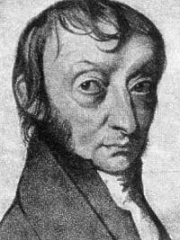
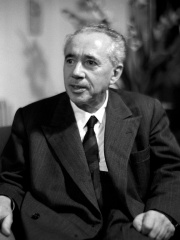
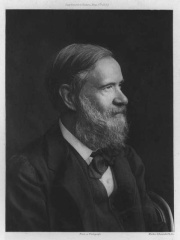
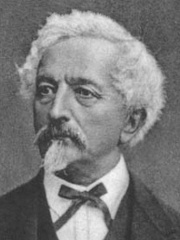
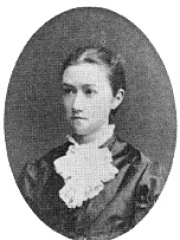
The Most Famous
CHEMISTS from Italy
Top 6
The following people are considered by Pantheon to be the most legendary Italian Chemists of all time. This list of famous Italian Chemists is sorted by HPI (Historical Popularity Index), a metric that aggregates information on a biography's online popularity.

1. Amedeo Avogadro (1776 - 1856)
With an HPI of 81.67, Amedeo Avogadro is the most famous Italian Chemist. His biography has been translated into 92 different languages on wikipedia.
Lorenzo Romano Amedeo Carlo Avogadro, Count of Quaregna and Cerreto (, also US: , Italian: [ameˈdɛːo avoˈɡaːdro]; 9 August 1776 – 9 July 1856) was an Italian scientist, most noted for his contribution to molecular theory now known as Avogadro's law, which states that equal volumes of gases under the same conditions of temperature and pressure will contain equal numbers of molecules. In tribute to him, the ratio of the number of elementary entities (atoms, molecules, ions or other particles) in a substance to its amount of substance (the latter having the unit mole), 6.02214076×1023 mol−1, is known as the Avogadro constant. This constant is denoted NA, and is one of the seven defining constants of the SI.

2. Giulio Natta (1903 - 1979)
With an HPI of 68.86, Giulio Natta is the 2nd most famous Italian Chemist. His biography has been translated into 66 different languages.
Giulio Natta (Italian: [ˈd͡ʒu.ljo ˈnat.ta]; 26 February 1903 – 2 May 1979) was an Italian chemical engineer and Nobel laureate. He won a Nobel Prize in Chemistry in 1963 with Karl Ziegler for work on high density polymers. He also received a Lomonosov Gold Medal in 1969.

3. Stanislao Cannizzaro (1826 - 1910)
With an HPI of 68.39, Stanislao Cannizzaro is the 3rd most famous Italian Chemist. His biography has been translated into 39 different languages.
Stanislao Cannizzaro ( KAN-iz-AR-oh, US also -it-SAR-, Italian: [staniˈzlaːo kannitˈtsaːro]; 13 July 1826 – 10 May 1910) was an Italian chemist. He is famous for the Cannizzaro reaction and for his influential role in the atomic-weight deliberations of the Karlsruhe Congress in 1860.

4. Ascanio Sobrero (1812 - 1888)
With an HPI of 66.38, Ascanio Sobrero is the 4th most famous Italian Chemist. His biography has been translated into 31 different languages.
Ascanio Sobrero (12 October 1812 – 26 May 1888) was an Italian chemist, born in Casale Monferrato. He studied under Théophile-Jules Pelouze at the University of Turin, who had worked with the explosive material guncotton.
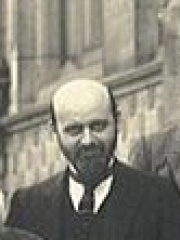
5. Édouard Herzen (1877 - 1936)
With an HPI of 62.21, Édouard Herzen is the 5th most famous Italian Chemist. His biography has been translated into 15 different languages.
Édouard Herzen (Florence, 1877–1936) was a Belgian chemist of Russian descent who played a leading role in the development of physics and chemistry during the twentieth century. He collaborated with industrialist Ernest Solvay, and participated in the first, second, fourth, fifth, sixth and seventh Solvay Conferences (1911, 1913, 1924, 1927, 1930, and 1933).

6. Agnes Pockels (1862 - 1935)
With an HPI of 61.17, Agnes Pockels is the 6th most famous Italian Chemist. Her biography has been translated into 26 different languages.
Agnes Luise Wilhelmine Pockels (14 February 1862 – 21 November 1935) was a German citizen scientist in chemistry, whose research was fundamental in establishing the modern discipline known as surface science, which describes the properties of liquid and solid surfaces and interfaces. Pockels became interested in fundamental research in surface science through observations of soaps and soapy water in her own home while washing dishes. She devised a surface film balance technique to study the behavior of molecules such as soaps and surfactants at air-liquid interfaces. From these studies, Pockels defined the "Pockels point" which is the minimum area that a single molecule can occupy in monomolecular films. Pockels was an autodidact. She was not a paid, professional scientist and had no institutional affiliation and so is an example of a citizen scientist. By contrast, her brother Friedrich Carl Alwin Pockels, for whom the Pockels effect was named, was a professor of theoretical physics at the University of Heidelberg.
People
Pantheon has 6 people classified as Italian chemists born between 1776 and 1903. Of these 6, none of them are still alive today. The most famous deceased Italian chemists include Amedeo Avogadro, Giulio Natta, and Stanislao Cannizzaro.
Deceased Italian Chemists
Go to all RankingsAmedeo Avogadro
1776 - 1856
HPI: 81.67
Giulio Natta
1903 - 1979
HPI: 68.86
Stanislao Cannizzaro
1826 - 1910
HPI: 68.39
Ascanio Sobrero
1812 - 1888
HPI: 66.38
Édouard Herzen
1877 - 1936
HPI: 62.21
Agnes Pockels
1862 - 1935
HPI: 61.17
Overlapping Lives
Which Chemists were alive at the same time? This visualization shows the lifespans of the 6 most globally memorable Chemists since 1700.

